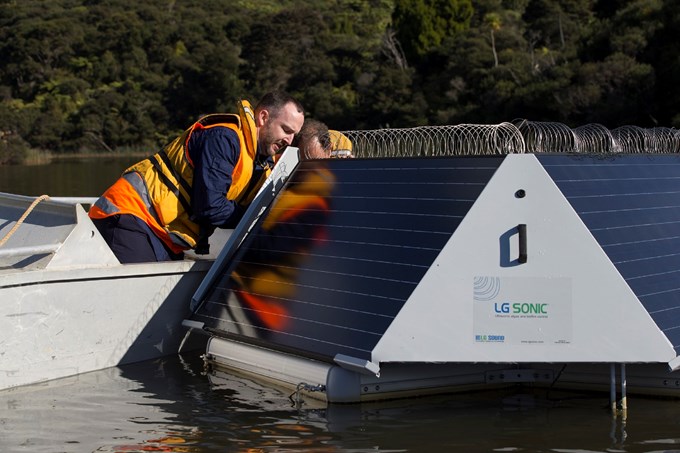Sonic blasting to remove bacteria in water sounds futuristic but it’s happening in our very own waterways.
Matt Hubrick, environmental scientist with Watercare, is 'sonic algae busting' in the Lower Nihotupu Dam in the Waitakere Ranges. He’s trialling this new method to remove the dreaded toxic blue/green algae (cyanobacteria) that arrive in our waterways each summer.
Here's how it works:
A series of small units powered by solar panels and attached to a buoy are set out on the dam – they take samples of the water (every ten minutes, 24/7), identifying bacteria pigments in the water and transmit the information around the globe to the Netherlands. The settings are calibrated to target the identified alga species, then ultrasonic vibrations, much like a glass breaking from a high-pitched sound, targeted to kill the alga are sent out.
A first for New Zealand
This technology has actually been in use internationally for some time, but the updated state-of-the-art version to monitor and eradicate algae, chemical free, is being used for the first time in New Zealand.
Previously, sonic blasts administered to the algae eviscerated everything, killing the algae instantly and releasing toxins which in turn harmed aquatic plants and fish.
With the new version, the onset of algal blooms can be predicted and the frequency of the blasts can be calibrated to target algae only. This method cripples and slowly kills the algae, avoiding the release of toxins, and is an all-around more environmentally-friendly approach.

Matt Hubrick is excited at the new technology and the opportunity to trial it.
“We’re always looking for innovative approaches to water quality. This is much more beneficial for the environment,” he says, “it doesn’t involve chemicals or risk harming other species; we’re always looking for ways to improve and of course we were keen on the new technology.”
The trial started at the end of December 2016 and Matt expects it will be a few more years to truly see if it has been successful. So far, the results are looking positive.


